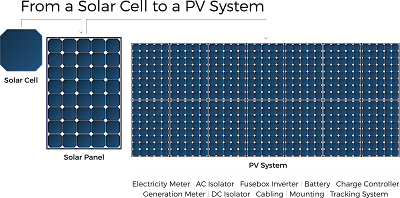As the world increasingly shifts towards renewable energy sources, terms like "photovoltaic" and "solar" have become prevalent in discussions about sustainable power. However, confusion often arises about whether these terms refer to the same thing. In this article, we will debunk the jargon and clarify the key differences between photovoltaic and solar energy, shedding light on these essential components of our clean energy future.
Understanding Solar Energy
Solar energy is a broad term that encompasses all forms of harnessing the power of the sun to generate electricity or heat. It is the most abundant renewable energy source on our planet. Solar energy can be utilized in two main ways: solar thermal and photovoltaic.
What is Solar Thermal Energy?
Solar thermal energy refers to the process of using sunlight to produce heat. This heat can be utilized for various purposes, such as heating water for residential or industrial use or generating steam to drive turbines for electricity generation. Solar thermal systems typically employ mirrors or lenses to concentrate sunlight onto a receiver, where the heat is captured and utilized.
What is Photovoltaic (PV) Energy?
Photovoltaic energy, on the other hand, refers specifically to the technology of converting sunlight directly into electricity using photovoltaic cells. These cells are made of semiconductor materials (such as silicon) that absorb photons from sunlight and release electrons, creating an electric current. The electricity generated by PV systems can power homes, and businesses, or even feed into the grid.
The Key Differences
The main difference between solar energy and photovoltaic energy lies in their applications and the processes used to harness the sun's energy. Here's a quick breakdown:
Application: Solar energy is a broader term that encompasses both solar thermal and photovoltaic technologies. It refers to the overall utilization of the sun's energy for various purposes, including electricity generation and heating. On the other hand, photovoltaic energy specifically focuses on the direct conversion of sunlight into electricity.
Energy Conversion: In solar thermal systems, sunlight is used to generate heat, which is then utilized for heating purposes or for generating electricity through steam turbines. In photovoltaic systems, sunlight is directly converted into electricity using photovoltaic cells without the need for intermediate thermal processes.
Technology: Solar thermal systems involve mirrors or lenses to concentrate sunlight, while photovoltaic systems rely on semiconductor materials in photovoltaic cells for direct electricity generation.
Conclusion
In conclusion, the terms "photovoltaic" and "solar" are not interchangeable, though they are related. Solar energy is a broader concept encompassing all methods of using sunlight, including photovoltaic energy. Photovoltaic technology, on the other hand, specifically refers to the direct conversion of sunlight into electricity using photovoltaic cells. Both solar and photovoltaic energy play vital roles in the pursuit of a clean energy future, offering sustainable alternatives to traditional fossil fuel-based power generation.
Understanding the distinction between these terms helps us appreciate the diversity and versatility of solar energy applications, paving the way for more informed choices in adopting renewable energy solutions. Embracing solar technologies, whether through solar thermal or photovoltaic systems, brings us closer to a greener and more sustainable tomorrow.

